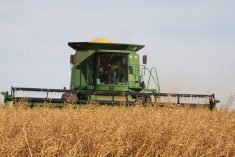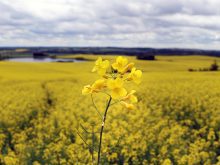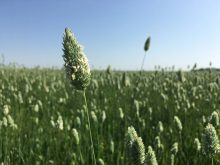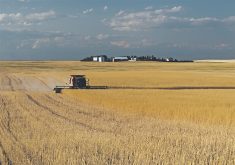WINNIPEG — Mustard is great on hot dogs and even better on a ham sandwich.
Those food uses of mustard aren’t going away, but innovators in Western Canada have developed a new mustard variety for a different market — bio-fumigation.
That’s the process in which a brassica crop, such as mustard, is incorporated into the soil to suppress diseases and pests.
Read Also

Europe holds promise for Canadian lentils
Pulse Canada is trying to help boost lentil consumption in Europe, which is already the fourth largest market.
“Mustard plants naturally produce glucosinolates, which are compounds that, when broken down, release bioactive substances that impact the soil around them,” says a 2024 guide from the Vineland Research and Innovation Centre in Ontario.
“These substances can be toxic to a range of soil-borne pathogens and pests, including nematodes and fungi.”
Bio-fumigation isn’t familiar to most farmers, but a few potato growers and tree nursery operators in Canada are experimenting with the concept.
“Verticillium is the big disease that (these) growers are trying to control,” said Rick Mitzel, chief executive officer of Mustard21, a research and development corporation that supports Canada’s mustard industry.
Some of the early adopters of bio-fumigation are using a mustard variety called AAC Guard. It was developed by Mustard21 and mustard breeders at Agriculture Canada.
AAC Guard is a sterile male hybrid that doesn’t produce seed, or very little. It’s been on the market for about two years.
Mustard21 research shows that AAC produces 20 per cent more plant biomass than open pollinated mustard varieties.
“The more plant matter you have, the more effective your bio-fumigant is going to be,” Mitzel said, adding he’s been to tree farms in British Columbia where AAC Guard grew to 5.5 feet in height.
That biomass is loaded with glucosinolates, chemicals that provide the hot flavour in mustard seed and act as bio-fumigant.
To control verticillium or nematodes in the soil, a grower would till AAC Guard at full flower to work it into the soil.
As noted on the Mustard21 website, AAC Guard can be used for multiple purposes:
- Suppression of nematodes.
- Suppression of soil-borne diseases like verticillium.
- A cover crop.
“There is really nothing that’s going to get you ground cover quicker than this product,” Mitzel said.
“(It) can grow from cotyledon to full flower in 45 days.”
Seeds for cover crops is a large market in North America, but using AAC Guard as a bio-fumigant could be the immediate opportunity.
It could be a replacement for chemical fumigants, which are applied to high value crops such as potatoes, onions and sugar beets, says an Oregon State University website.
“Chemical fumigation is widely practiced…. While (it) has been shown to be effective, it is expensive (and) recent research also shows that it impacts soil health.”
For now, Stamp Seeds and some garden centres in Canada are distributing AAC Guard. It’s mostly early adopters in the potato industry, tree farms and some market gardeners who are trying the product.
Still, it seems like interest is increasing, Mitzel said.
“They (customers) are finding it on the internet and calling us,” he said.
“We just started to do some marketing on (AAC Guard). It’s starting to get some traction.”
















